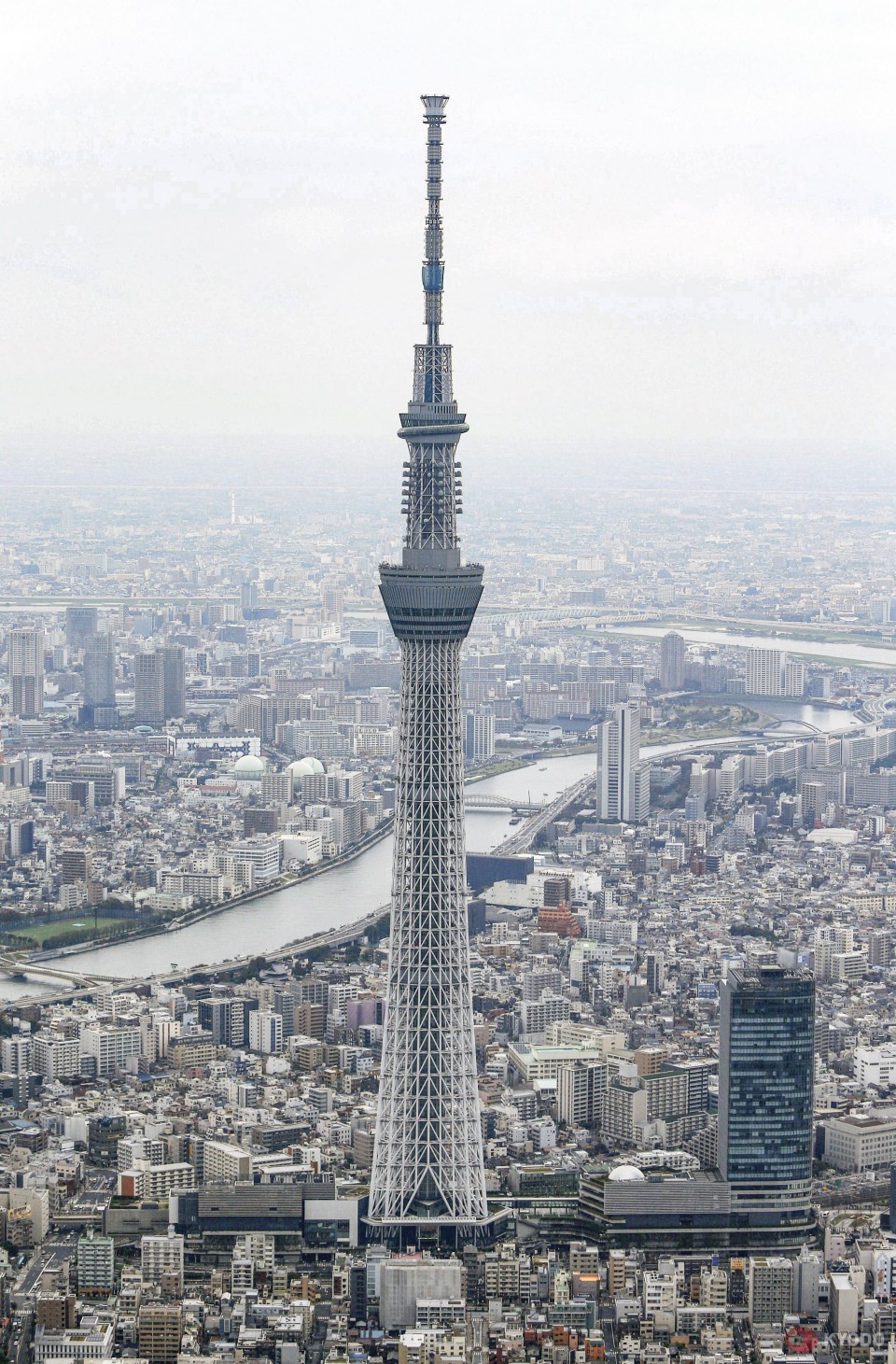Tokyo Skytree Marks 10th Anniversary With Kabuki, Coasters And JoJo
The cityscape that defines Tokyo, Japan’s tallest structure, Tokyo Skytree celebrated the 10th anniversary on Sunday. It is becoming an emblem of Japan’s pre-pandemic tourism expansion.
The commemorative events to mark the official opening of the structure’s 634-meter Tembo Deck, as well as Tembo Galleria viewing areas, are part of the continuous “JoJo’s Bizarre Adventure” anime collaboration, as well as a performance from Kabuki actor Ichikawa Ebizo, who live-streamed via a projection screen that was positioned at the top of the tower during the day.

Coasters commemorating the 10th anniversary of the event made in two workshops locally were handed out to the first 634 fans waiting to get tickets distributed from 6:30 a.m. on the Tokyo Solamachi shopping center’s Sky Arena. There included Masaki Yoshida, 40, from Kawaguchi, Saitama Prefecture, close to Tokyo, and four other relatives. All received coasters.
Yoshida Yoshida, who claimed to have been at previous Skytree anniversary celebrations before the coronavirus pandemic hit, said that the Skytree building and its design remind him of the time they were awaiting to welcome his youngest son Koki currently 11 years old.
It is located on a former railway shunting yard within the Oshiage neighborhood in Tokyo’s east Sumida Ward; Tokyo Skytree also functions as a broadcasting tower and is an integral part of the Tokyo Skytree Town facility that includes the Tokyo Solamachi shopping center as well as the Sumida Aquarium.
The project for the towers, helmed by Tobu Railway Co. at an estimated cost of 65 billion yen ($508 million), was developed following major broadcasters’ suggestions for a structure that would allow digital television transmission free of interference from Tokyo’s many 200-meter structures.
A considerable amount of interest from the nation was generated by Skytree’s public debut on May 22nd, 2012. Lotteries for admission during the initial week were offered with odds of 1 in 335 to 45 slots available at noon on May 22nd. The company’s millionth customer was greeted in August of the same year.
Even though it reached the 40-million guests marked in December 2021, Skytree has been impacted by the epidemic.
The 780,000 admissions it received in fiscal 2020 was the first year with attendance below one million and far less than the 3.6 million and 4.27 million that walked through its elevators in fiscal 2019 and 2018 in fiscal 2019 and 2018, respectively.
However, there are signs of a recovery. In the fiscal year 2021, it received 1.04 million visitors and was open for the debut Golden Week after three years at the beginning of May this year. The gradual return of tourism to the country starting in June is expected to improve prospects.
International tourists made up 28.9 percent of all admissions in the year 2019, according to the company that runs Tokyo Skytree.
“The absence of visitors has had an impact and we hope that they’ll come back when the limitations are removed,” said a spokeswoman for Tobu Tower Skytree Co.
A rickshaw puller transports a customer passing the Sensoji temple in the Asakusa district of Tokyo, Japan, on Friday, Dec. 25, 2020. Japan’s infrastructure is already one of the worlds safest and investment in mitigating natural disasters is ramping up. Photographer: Toru Hanai/Bloomberg
Ahead of the 10th-anniversary celebration, the Tembo Deck 350m up was crowded with couples, tours, and many others.
Natsumi Tsukui, a 21-year-old beatboxer who hails from Osaka Prefecture, came with her mother and spoke highly of the “amazing” panoramas of sprawling structures below.
However, for local businesses and residents living just beyond the tower and the shopping center, the presence of the building has had mixed effects on the neighborhood.
Kiyoshi Tanaka, who for more than 50 years ran the local shop Ajigin, said that the area has grown more crowded. Masataka Omine, who manages the Omineratan workshop, specializing in furniture, said the place is “energized and rejuvenated.” However, he said that the development had diminished the feeling of community. “The traditional shopping avenues have disappeared.”
Source: Kyodo
Also read about The 8 Coolest Buildings In Japan
